The word "Padaung" refers to a subgroup of a mountain tribe, known to English speakers as "Kayan" and even more precisely Kayan Lahwi. To be more specific, the Padaung are a subgroup of a much better-known ethnic group in Thailand, the Karen. As a result, and knowing that there is a negative connotation today, these two terms, Padaung or Kayan, refer to what is commonly called the "long-necked Karen" tribe (I apologize for using it several times in this article), or worse, the "giraffe women".
To be more precise, they are actually a subgroup of the Karenni or Red Karens (in reference to the dominant color of their traditional clothing), better known as Kayah, like the state of Myanmar, which borders the border province of Mae Hong Son, where the village of Huay Pu Keng is located. And precisely, the Padaungs present today in Thailand, like several other Karen tribes, are originally from neighboring Burma. Their arrival in Thailand is modern since it is essentially due to the civil war affecting Myanmar.
Indeed, since Myanmar gained independence from the United Kingdom in 1948, many sub-ethnic groups living there have fled to neighbouring countries due to political tensions already present at that time. Under the British Empire, the latter appreciated the degree of independence they were given, while the British were content with firmer control of the central plains.
But with the military coming to power, the generals dream of a unified country, where the communist model implies a smoothing of cultures. Firmly opposed to this vision, several Karen ethnic groups and others, such as the Shans or the Kachins, take up arms and end up training their own armies. And when the fighting intensified in the 80s and 90s, many fled across the mountains to escape the conflict and the forced labor imposed by the junta. To understand a little better the situation of ethnic groups in Burma, you have this very interesting article.
It was then that, like others, a large part of the Padaungs, known for their traditional brass rings around their necks, settled in northern Thailand. In short, they are above all refugees, which brings me to the next question.
Should you visit the “long-neck Karen” villages?
The question is worth asking, because if you inquire about this kind of visit, you will probably have the same debates as with the elephants in Thailand, to do, not to do? where to see them in the best conditions, etc. You will notice the voluntary analogy with animals, because it is precisely one of the criticisms made of this kind of village, one has the impression of visiting a human zoo and the overall feeling is mixed. The feeling is often a general malaise.
If we look at the reviews of several of these villages, we read things like this:
- "Meh, paying 100 Baht to see 4 shops, a bit much!" (and again, 100 baht is not expensive)
- "Tourist trap places. I felt like I was in a zoo visiting "individuals" stuck in their booth"
- "While visiting an elephant park was not too unpleasant, this village made me feel uncomfortable" (see again the comparison with elephants...)
- "I thought I was going to see a typical village. However, I had read reviews that talked about a human zoo... We immediately wanted to run away."

So on one side we have those who criticize the scam, by evoking this notion of staging, of a showcase village, not to mention the fact of having to pay to finally access what resembles souvenir shops. There are also those who, on the contrary, accept "the game", because it still allows us to rub shoulders with and make accessible a unique and little-represented culture (a recent figure mentions no more than 600 Padaungs living in Thailand) without having to do X days of expedition in the jungle.
Among the more positive opinions, we find in particular the notion that these villages/attractions at least allow their inhabitants to earn an income. For example, this comment mentioning that "tourists are their only resource". Another, found on one of these villages, sums up this dilemma by mentioning this: "reconstruction of a Karen village, so it is obviously not authentic but remains interesting and astonishing". The comment continues by asking the following question: "So should we be embarrassed? Should we boycott as some suggest?", clarifying his point of view by writing "that persecuted in their country of origin and not completely integrated into Thai society, their only means of subsistence is to charge entry and to buy the objects that they make or resell".
And here we touch on the very essence of this questioning. To understand the reason for these villages, I come back to this notion of refugees. The members of these tribes fled a war, and if they found a host land, it was at the cost of their freedom, which was limited, simply because they were not integrated into the Thai system. Without Thai nationality, they did not have access to education and the possibility of integrating into society by finding work, etc. In short, a long-necked Karen village = refugee camps.
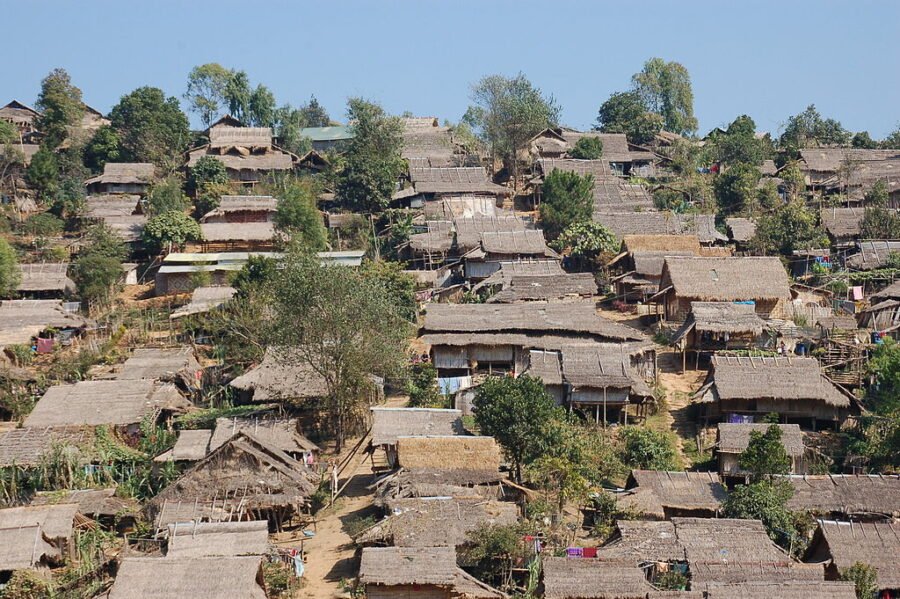
Although things are changing and many new generations are benefiting from Thai nationality, there are still refugee camps, similar to large "open prisons", where movement outside the community is restricted.
But in the case of the Padaung, it is a little different. This impromptu installation at the neighbor's house has helped introduce their distinctive culture to the region. Iconic images of women in their traditional dress and brass necklaces around their necks and ankles, quickly went around the world. With this exhibition, the refugee camps are arousing curiosity and becoming an attraction for travelers to Thailand.
In any case, the Thai government, then in the midst of a tourist boom, saw an opportunity. Rather than having to financially support these populations, in the form of aid, it saw a source of income and the possibility for these people who had become stateless. Because isolated in their mountains, they previously lived mainly from agriculture. By becoming refugees, they became stateless (even if they were officially considered Burmese) and no longer owned the land on which they lived, so no more plantations. So how could they survive?

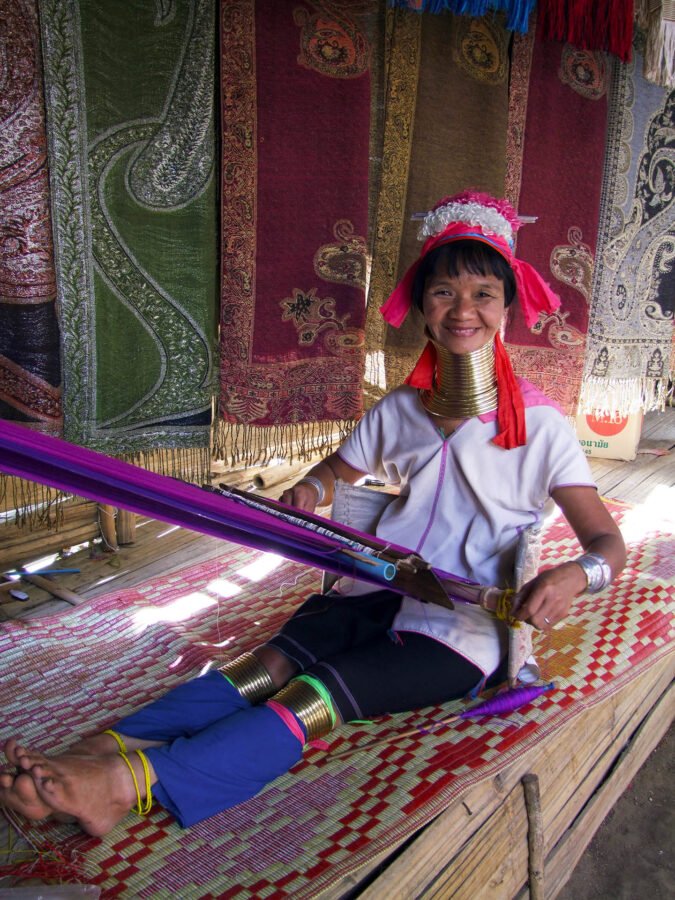
The Padaung women were then placed in pseudo villages, sometimes a few hundred from the real refugee camps. They then posed for photo shoots, wove silk scarves and sold handicrafts and other traditional souvenirs. A collection or entrance fee to the village completed this new business. Some did better than others, because they received a monthly salary if they wore the rings, otherwise, they depended solely on the income from their production. Knowing that depending on the village, no one knows what portion the inhabitants received from the famous entrance collection. An article (en anglais) on the testimony of a young refugee in the mid-2000s is edifying:
The women in the village can only run stalls for tourists and weave scarves to sell. The men can do carpentry for our community, but they are not allowed to work. My father collects empty beer cans and sells them to make money. The men are ashamed because they have to live off the money the women earn, so many of them get drunk on rice wine because they have nothing to do.
Some travel agencies, even today, defend themselves and argue that many families are here, unable to leave because they are still refugees, and earn at least some money from tourism. They cannot leave the area they have been assigned and must stay in places managed by the province, unless they have obtained permission from their district office.
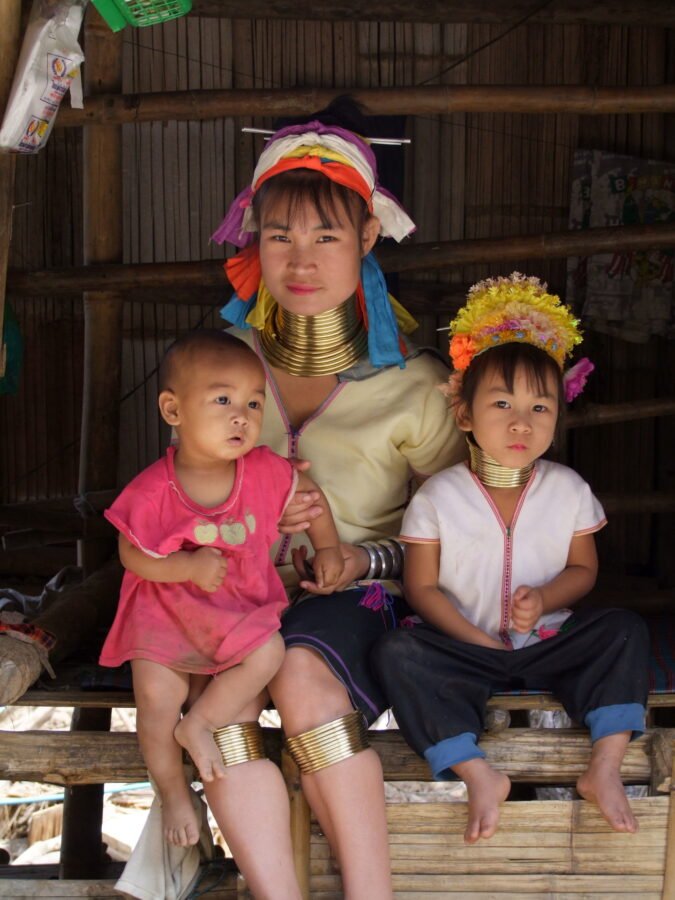
I even read on the website of a local tour operator:
Some rightly claim that these villages are "human zoos". However, a slight reduction in the number of visitors is unlikely to change the situation and the villagers depend on visitors for their income.
However, the damage is done, and over the years, the machine is derailed and this bad reputation is pushing a growing number of tour operators and tourists to boycott these showcase villages because of their exploitative nature. As a result, their inhabitants are pushed even further into precariousness.
The same comment then added: Villagers are working together to move away from the 'human zoo' tourism models that have been associated with our people in Thailand. Proof, if any were needed, of a desire to move away from this exploitation model. And the site in question was talking precisely about the village of Ban Huay Pu Keng.
This (very long) introduction seemed necessary to me to understand the context in which I was going to Huay Pu Keng. You should know that my previous visit to a "long-necked Karen" village dates back more than 10 years ago. I was then a new expat who did not yet have all the knowledge accumulated since then. It was the 2nd time that my parents came to Thailand and while visiting the Chiang Rai region, I wanted to go see one of these famous villages, thinking that it would be atypical. I did not know what I was getting into...
Arriving at the entrance, I remember having to pay 300 bahts to enter, thinking to myself that I found it excessive to pay to enter a village. And once inside, it left an even more bitter taste when you saw this row of stalls, all selling more or less the same things. And where are the houses, the other inhabitants (especially the men)? Nothing authentic, I swore to myself that I would not be caught out again.

So how is Huay Pu Keng different?
Already, it is part of the three original villages that opened up to tourism from the beginning, with Ban Nai Soi and Ban Huay Seau Tao. So yes, said like that, it does not necessarily sound like a strong argument, because apart from having been the first to be exploited, what difference does it make?
Well, at least there is the geographical advantage. Because the first refugee camps were originally created only a few kilometers from the border. The proximity to their homeland and especially the mountains means that it remains much more authentic than the Long Neck villages located elsewhere, especially in the plains. In this natural setting, the village functions almost like any other hill tribe village in Thailand.
Note that all the other "long neck villages" were after the Thai government authorized the installation around larger cities like Chiang Mai, in order to increase the tourist interest of these regions, then easier to access than Mae Hong Son. The mercantile aspect is then even more pushed there.
Today, we can find several villages north of Chiang Mai, including one in Pai, at least two, near Chiang Rai, another next to Thaton. In all, I spotted at least 9 "long neck" villages, often referenced as Karen villages and often mixed with other tribes (this was the case in the one visited near Chiang Rai). For the record, we could even before covid find a "village" of this kind in Pattaya...

Knowing that I was finally going to visit the Mae Hong Son region, I wanted to "try my luck again", hoping to find a village that was perhaps more authentic. During my research, I had not found Ban Nai Soi, located northwest of Mae Hong Son (look for Kayan Taryar, which also seems to have good criteria. It is not far from a large refugee camp, which stretches across the mountains over 2 km long and apparently shelters 9 people! The other, Ban Huay Seau Tao is spotted Long neck village market on Google Maps and is located south of Mae Hong Son. But it seemed to me to be too commercial, with the usual approach that is generally criticized.
Then there was Ban Huay Pu Keng, just less than 3 km as the crow flies from Ban Huay Seau Tao (but more than 20 by road). The overall rating of the reviews is also a good indicator, at least on Google. If the lowest rated Karen villages are around 3.3, Huay Pu Keng reaches a rating of 4.2. Among the reasons? Community tourism.
It is a tourism based on the active participation of the community, also called simply CBT (Community-Based Tourism), perceived as a more sustainable and culturally sensitive tourism industry. Based on the premise that the Padaungs, but also the Kayaws, the other tribe living in this village, have artisanal knowledge such as weaving, making bracelets, wood or bamboo carving, why not show how it is done rather than just selling?
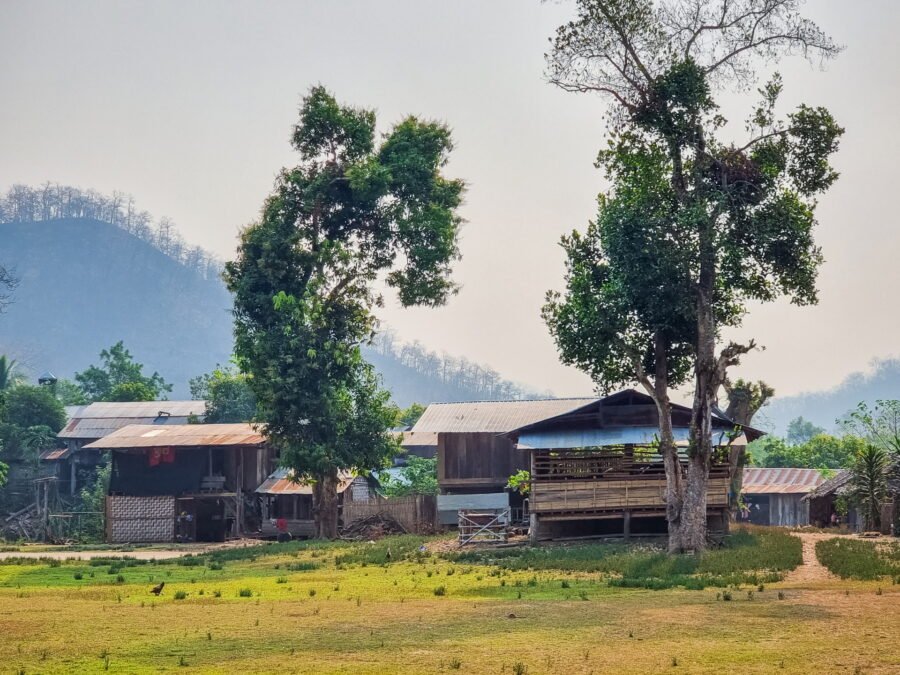

Community tourism aims to offer a more interactive experience with tourists, in order to better share customs and traditions. Activities and workshops have been developed that allow tourists to make handicrafts, but also to share a meal or even sleep on site in a guest house.
This is reflected in particular by the creation of a team that will manage and listen to everyone's wishes. Meetings between villagers are organized regularly to assess who wants to work in tourism and how. They discuss what is going well, what needs to change and the opportunity to include new projects. Officially, the village made the transition to community tourism in 2016. It is the first and only Padaung village to date to have this distinction.
It should also be noted that this orientation towards sustainable tourism involves preserving the environment. This is what earned this village the nomination in the list of 3 Thai tourist sites among the 100 most environmentally friendly sites, which I mentioned in my previous article and which prompted me to create this one.

Getting to Huay Pu Keng
Where there is already a notable distinction with the other villages is the way to get there. Here, there is no road leading directly to the village… well almost. You will of course have a long road winding along the valley, bringing you close to the village. In fact just opposite, but the village itself is accessible only by boat.
The short version being the one I did, I drove from the center of Mae Hong Son (about twenty kilometers; so allow 30 minutes) to the dirt parking lot. All that remains is to take a boat to the other side of the Pai River. In this case, the crossing is charged 50 baht per person, one way (from what I remember, unfortunately, I didn't write it down and it's impossible to find the information anywhere). It's proportionally expensive since there are barely 50 m to cross, but hey, that's the game and it's one of the only ways for the men of the village to earn a living.


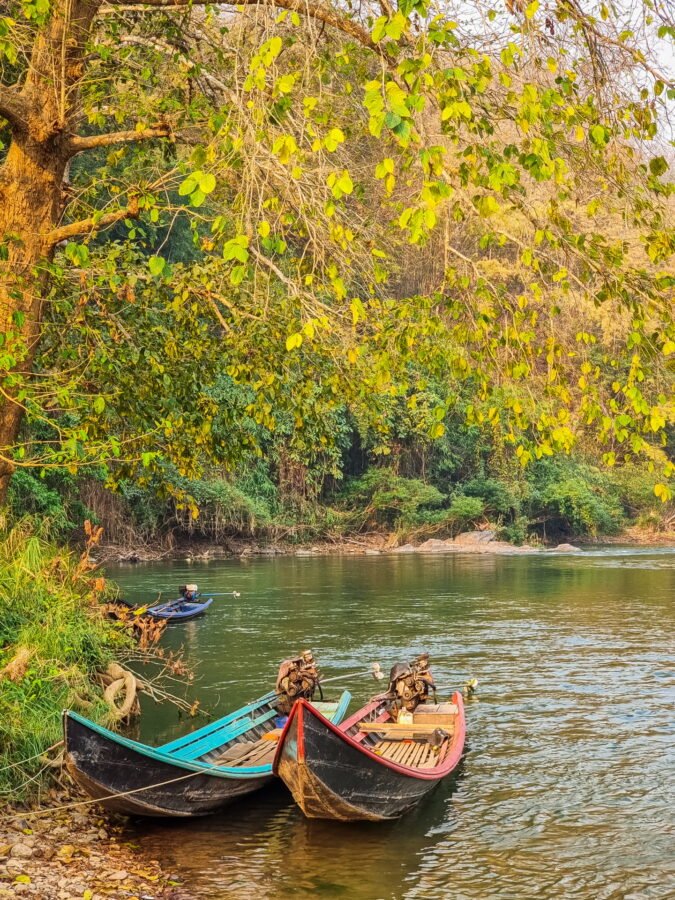

You can also, if you don't have a vehicle for example, take a taxi from the center of Mae Hong Son and go to the quay marked: Ban Tha Pong Daeng Tourist Pier, 5 km from the center. There is also another one 3 km further south: Huai Dua Tourist Port. Note that the boat has its limits, because in the dry season, From March to May, the water level may not be sufficient for navigation to the village. And conversely, at the height of the rainy season towards September/October, the flow rate might be too high and also prevent traffic.
From what I've read, Huai Dua seems to be the preferred dock to get to the village, you can charter an entire boat there for 800 baht, up to 7 people, convenient if you are a large family or group. By the way, a little clarification regarding the name, the Thais call it Baan Nam Piang Din, so don't be surprised if you see or hear this term, Huay Pu Keng being the Burmese name for the village.
My impressions of Huay Pu Keng
I want to say it right away, the formula remains the same as elsewhere. There is a right of access to the village and you will find several shops selling similar items. But the similarity ends there. As another local agency describes it itself:
The village’s main street is clearly set up to make money from visitors (…if the entrance fee didn’t tip you off). However, the transition from the tourist area to the simple life of the surrounding village is almost seamless – something you won’t experience in the showcase “long neck” villages of Chiang Mai or Chiang Rai, and even more immersive than other long neck Karen villages in Mae Hong Son province.
When I came, at the beginning of this year (2022), I paid 200 baht to enter the village. I often see sites talking about a price of 250 baht, but I wonder if it's not 200 baht for the village itself plus the 50 baht for the crossing, but basically, that gives you an idea of the price. As a reminder, some villages charge up to 500 baht! So we are in a reasonable range and what's more, we know that this money goes well for the village and its inhabitants.


I would like to point out in passing that the fact that we are still in the "covid" period (so with the country relatively closed to tourists) contributed to my decision to try my luck at revisiting such a village. Because let's not forget that due to their status as residents without Thai nationality, the Padaung villages as a whole, heavily dependent on tourism, were not eligible for the special aid put in place by the government during the pandemic.
Already in normal times Huay Pu Keng is not conducive to mass tourism, at this time, it is dead calm, especially since it is early, barely 8 am. So it is as the only tourists that we disembark on the bank of the village. A map of the village is displayed right next to the entrance sign, allowing to understand the location of the different points of interest, but also the extent of the village which is not just a commercial alley.
Despite this early hour, we soon come across the first stalls already ready. We then meet our first hosts, with characteristic rings around their necks. And it must be said that we are generally welcomed with smiles.



As you walk down the main path, you really feel like you're in a "real" village, everyone goes about their business and yes, there are vendors, but like in any village intended to receive tourists.
It's easy to immerse yourself in the atmosphere of a real mountain village, which, technically, is all the better when you see the infrastructure it contains. In bulk, there is not one, but two churches (one Catholic and one Protestant), a small clinic, an educational center, a nursery, a soccer field, a school and even a bookstore next door.




Afterwards, if the first impression remains good, everything is not perfect, because we find the "flaws" of these villages. The stalls follow one another and look alike. And although the map at the entrance to the village clearly indicates that there is a wooden statuette sculpture center (not seen operational) and a weaving center (not active either, but I reiterate the context, in the middle of covid, the stock must have been full so no need to produce any at that time), it is difficult to think that everything is really made on site. With that, I can't help but think that with all these saleswomen (and again, we see that some houses are currently not selling/no longer selling), I don't know how they manage to get by and sell enough...
It is with this thought in mind that I begin the visit by simply going straight along the main artery that crosses the village. In doing so, we arrive at the foot of the educational center, where statues of Buddha seem to want to remind us that here, it is Buddhism that dominates. Except that we are in a Padaung village, and as is often the case with mountain ethnic groups, Buddhism is not the dominant religion, which brings me to the next point of visit, the sacred site of the village (indicated n°6 on the map). The Padaungs are above all animist and will punctuate the year with rites Brahmanical.
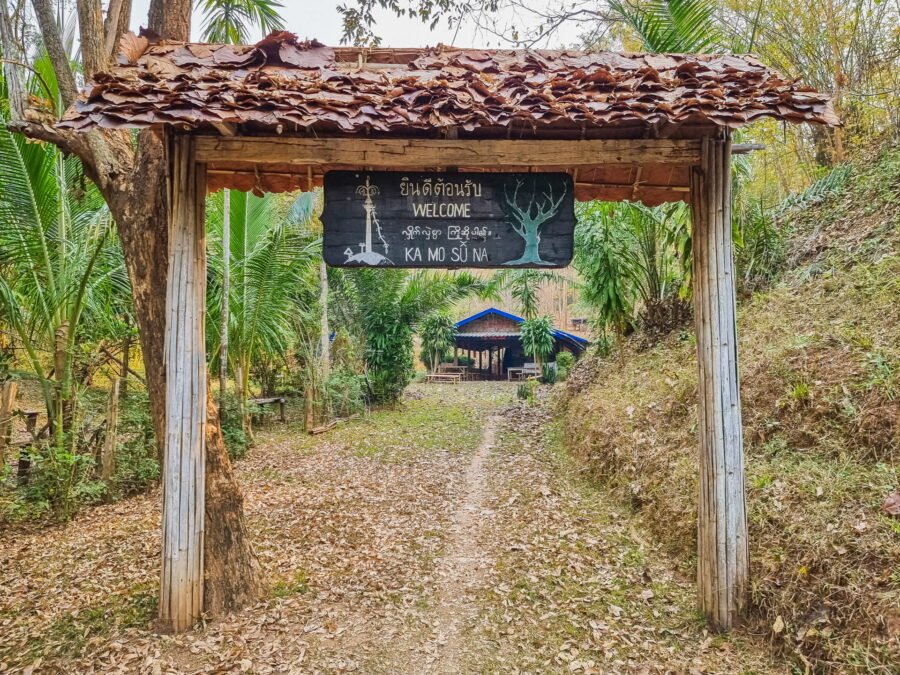
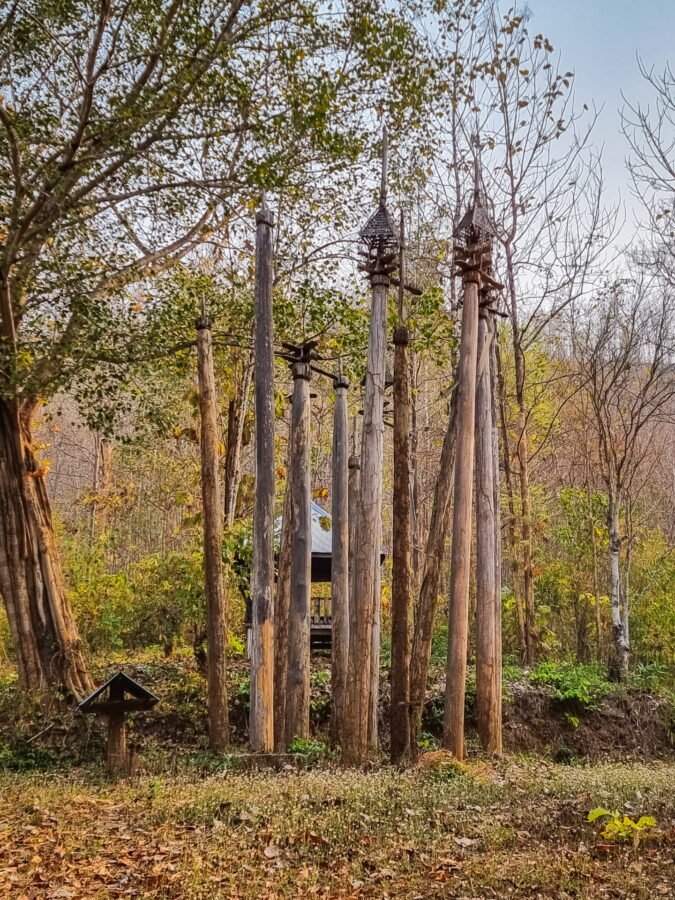
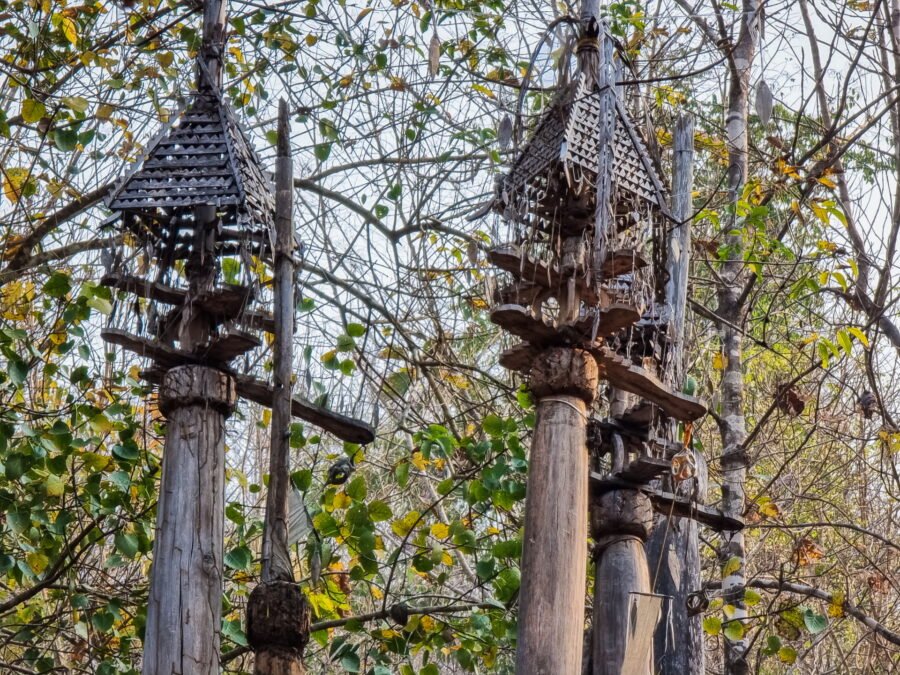
One such ceremony takes place in late March/early April, and marks their New Year. They celebrate it with the erection of a sacred wooden pole called Khankwan, and marks the gathering of all the spirits. In their dialect, it is called Poy Ton Tee, which means umbrella tree ceremony, because at the top of the pole, there is an umbrella-shaped decoration. The festivities last three days and include a wide range of activities including music, dancing, sports competitions and divination sessions.
We then get lost in the small streets perpendicular to the central alley, and, after crossing a small wooden bridge, we find ourselves at the village stadium. A beautiful space for the children from the neighboring school to let off steam.
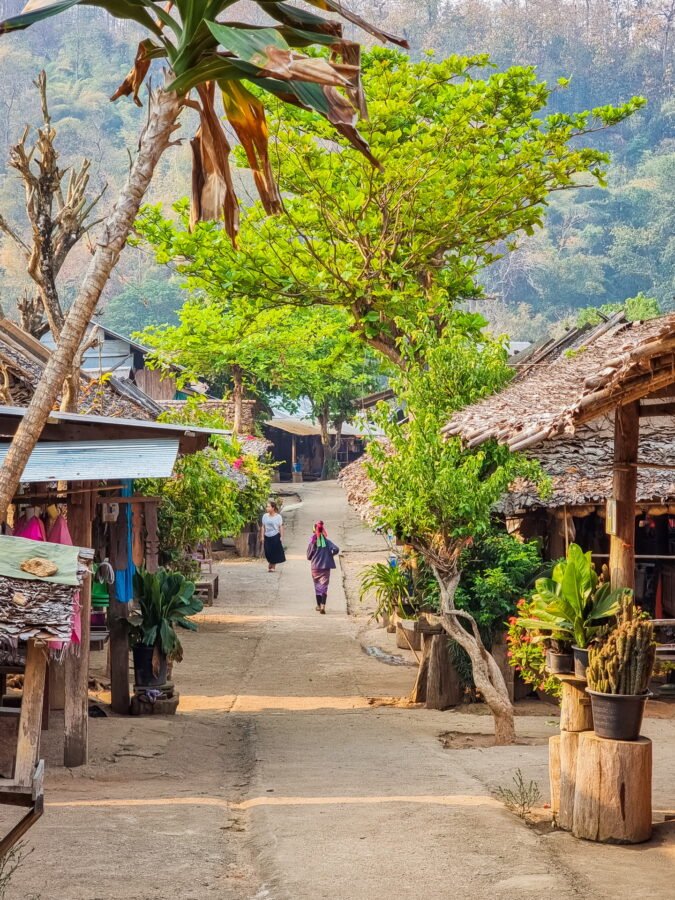

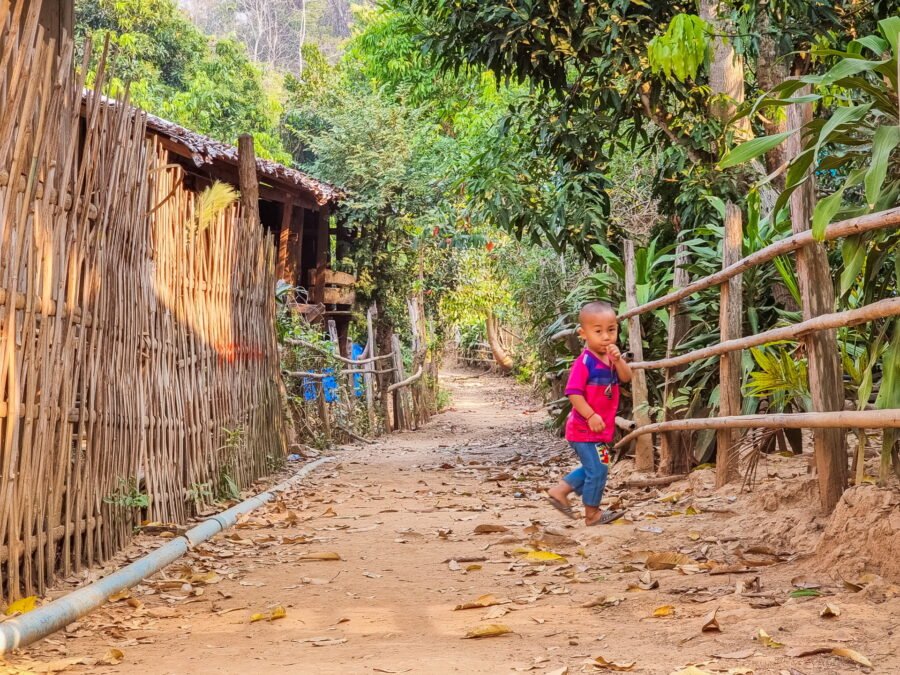

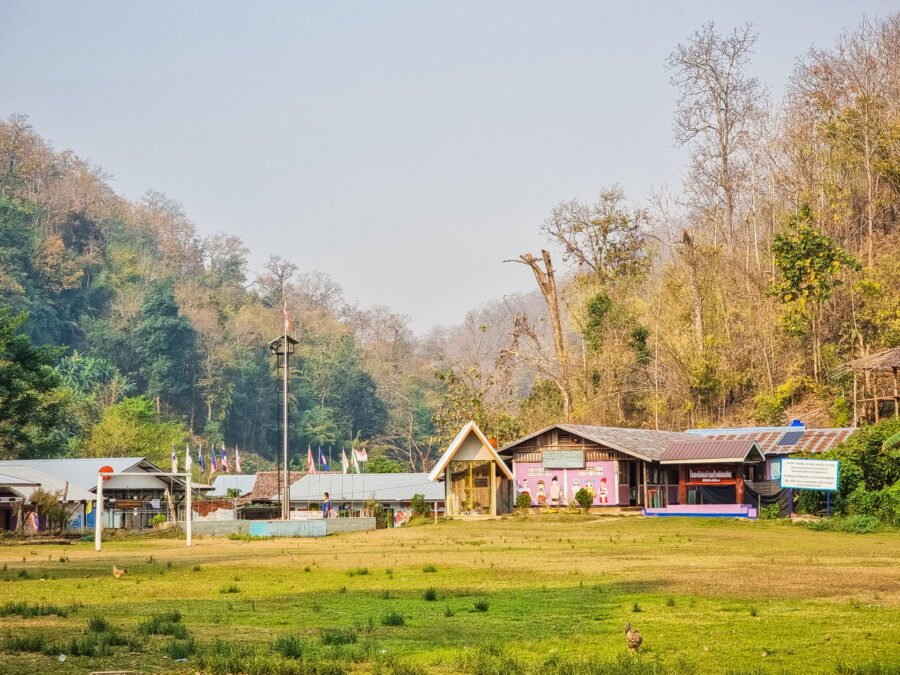

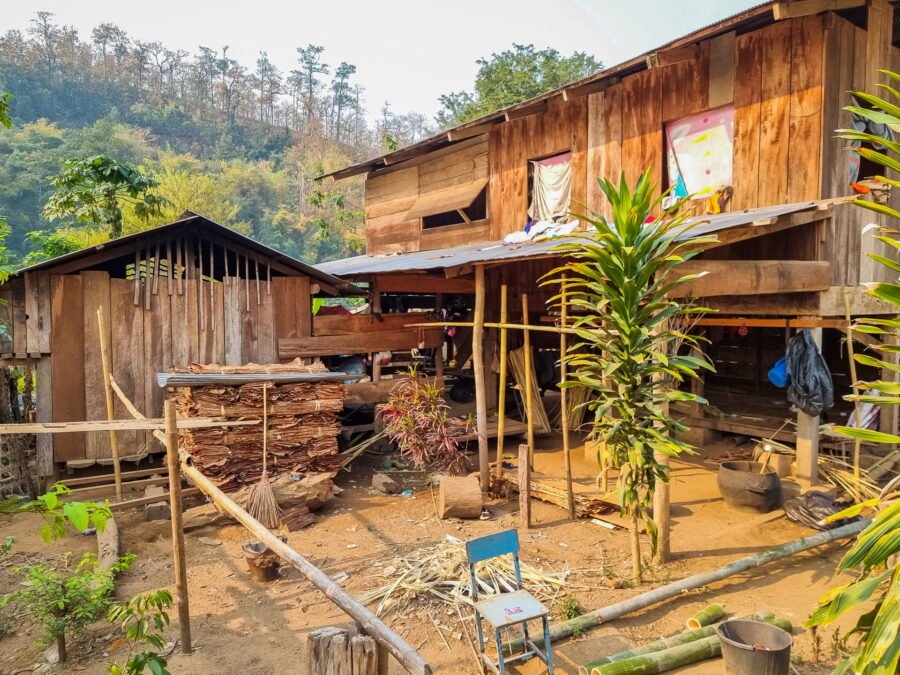
For the record, following the road that runs along the valley from national road 108, I quickly found myself following a small car. The road runs along the Pai River for 6 km and past a final crossroads, outside Huay Pu Keng, another small village and a small isolated temple a little further, it is a dead end (in fact, we arrive at the border, since the latter is only 5 km as the crow flies from the village).
I was thinking, "Hey, maybe other tourists, locals apparently, who also come to the village." This proved me right when I saw the car take the same dirt road to arrive at the village parking lot. You guessed it, given the early hour, it was the village schoolteacher starting her day.




Next stop, the Catholic church. The other church, Protestant, is closed. I don't know if one church is more attached to one of the ethnic groups than the other, since, as a reminder, the Padaungs share the village with the Kayaws, which means "big ears", in reference to the large earrings that the women wear. Kayaws who, for once, I would not come across at all today.
It must be admitted that the latter is striking. You can feel that a nice budget has been put into it and taking a look inside, it confirms this feeling, it is all nickel, brand new. It contrasts with the modest wooden houses that surround it. Going back up towards the main street, I come across a workshop assembling panels with dried sheets, used to cover certain roofs (more those of the terraces than of the houses themselves, which mainly use classic corrugated iron).


We've been wandering around the village for about an hour now. We've come across very few people in the end (locals I mean, as tourists we were the only ones), which made it feel empty, lacking a bit of animation. Afterwards, I suspect that in normal times it must be more active.
Note that in addition to the clothing workshops, you can extend your experience by sleeping on site in one of the village's homestays, which can be an opportunity to spend a more privileged moment with its inhabitants. In addition, I saw that it is possible to do a small trek in the jungle behind, leading to a small cave. A 30-minute walk, so an hour in all, if you ever have time.
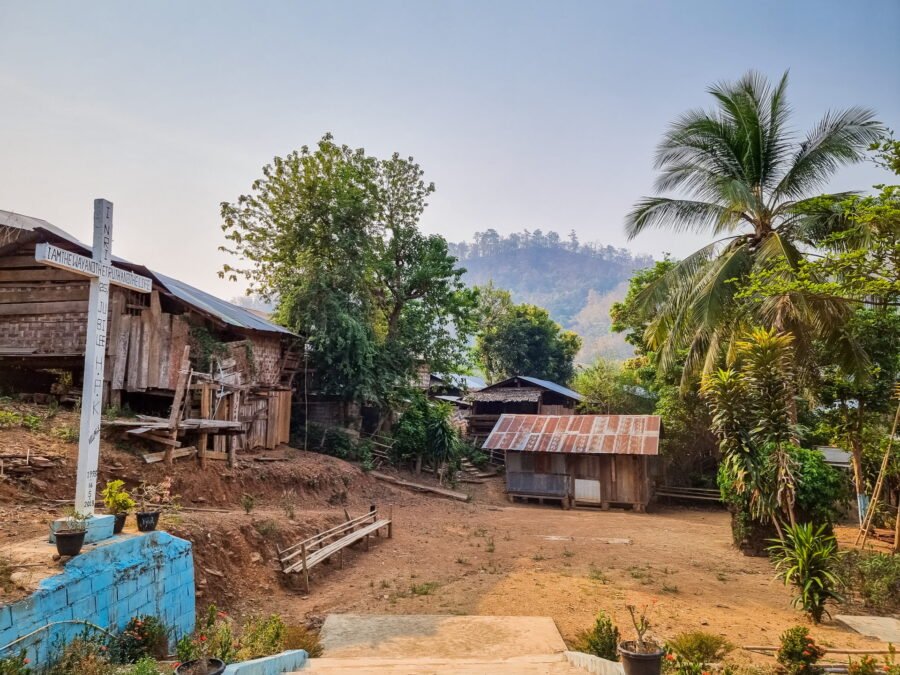



Women with long necks, symbol of a bygone past…
I wanted to end this article on a note related to the evolution of the world and consequently, tourism, and therefore the future of this kind of village. It is obvious that with social pressure, the "long neck" villages will have difficulty surviving as an attraction and will struggle to continue to attract the curious to the extent that the women wearing the rings disappear with the new generations. Today, only the old ones still wear them naturally.
For young Padaung girls who were born in Thailand, they rarely wear the rings or even their traditional clothes in daily life. Especially, young people who want to study in a school or university just like Thai or Burmese citizens. One of the main factors is that the new generation of Padaung believe that the more educated they are, the better quality of life they will get.

An obviously honorable way of wanting to adapt in order to hope for a better future, even if it means "sacrificing" one's culture. Rather than a sacrifice, I see it as an evolution. First, because not wearing a necklace is not the prerogative of the Padaungs living in Thailand. The testimony of a young Padaung girl named "Mangi" demonstrates this by saying that she did not wear rings when she lived in Burma. Another instructive testimony, that of "Pang", on the perception they have of their own culture.
Speaking about her decision not to wear the heavy brass necklaces like the girls from other villages (the ones mentioned in this article, Ban Huay Sua Thao, Ban Nai Soi, and Ban Huay Pu Keng), she explains firstly that it is shyness, but also because of the difference and strangeness she feels in wearing this attribute. She wants to dress normally to look like the "ordinary" people attending school and blend into society.
Suffice to say that coming across "giraffe women" will become a rarity. And if the phenomenon will continue for some time in these villages, it is not certain that it will be sustainable. Another good reason for me to visit Huay Pu Keng very soon, because the more time passes, the more artificial the maintenance of this tradition will be.
My sources
They are English-speaking, but I wanted to include my sources that helped me write this article for the explanations:
- https://www.fairtourism.nl/en/kayan-thailand-en-2/
- https://www.irrawaddy.com/photo-essay/kayan-long-neck-refugees-myanmar-struggle-thailands-tourism-crashes.html
- https://www.thailandhilltribeholidays.com/visit-long-neck-village/
- http://ithesis-ir.su.ac.th/dspace/bitstream/123456789/2352/1/57056961.pdf (a whole thesis on the Padaung people, in English)
- https://www.travelfish.org/beginners_detail/thailand/78
Did you like the article? Share it on Pinterest!
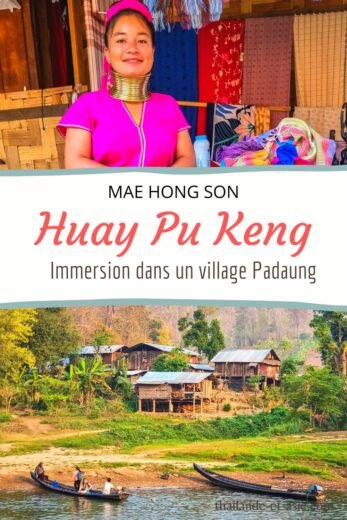


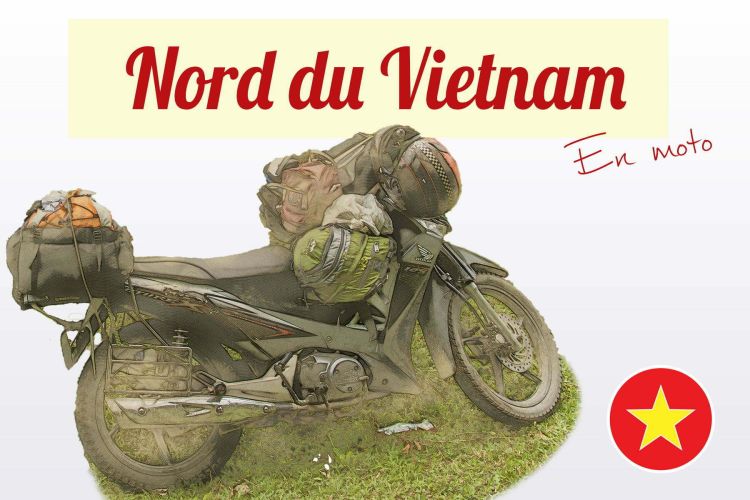
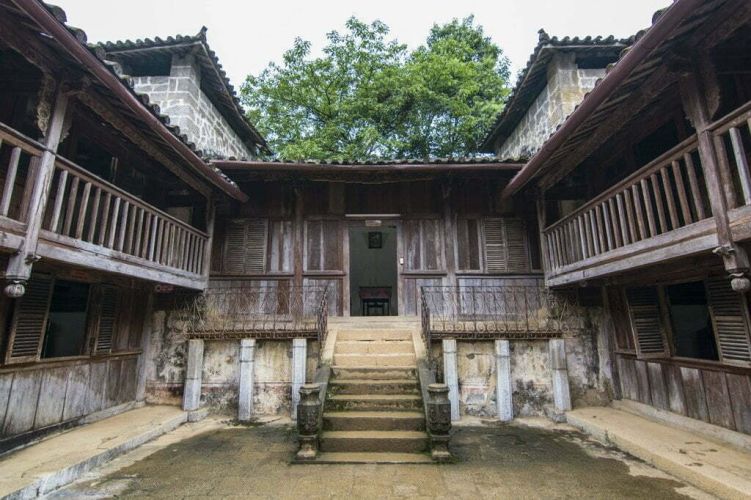
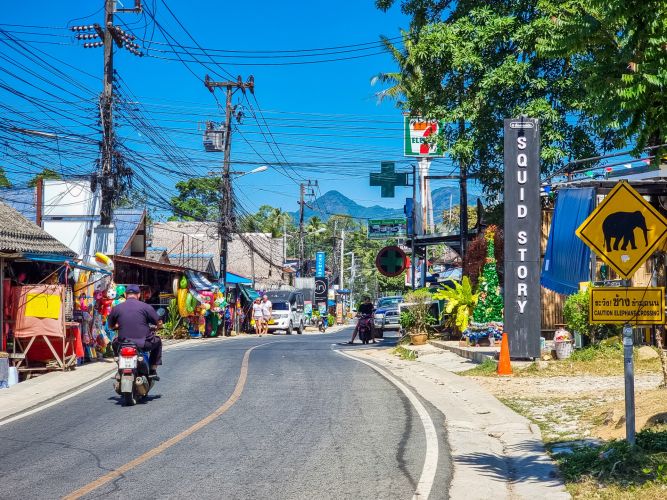
2 Comments
A well-documented and argued point of view in addition to the personal experience of the author of this article.
Exciting and enriching @
Hello,
Thank you very much for this compliment!